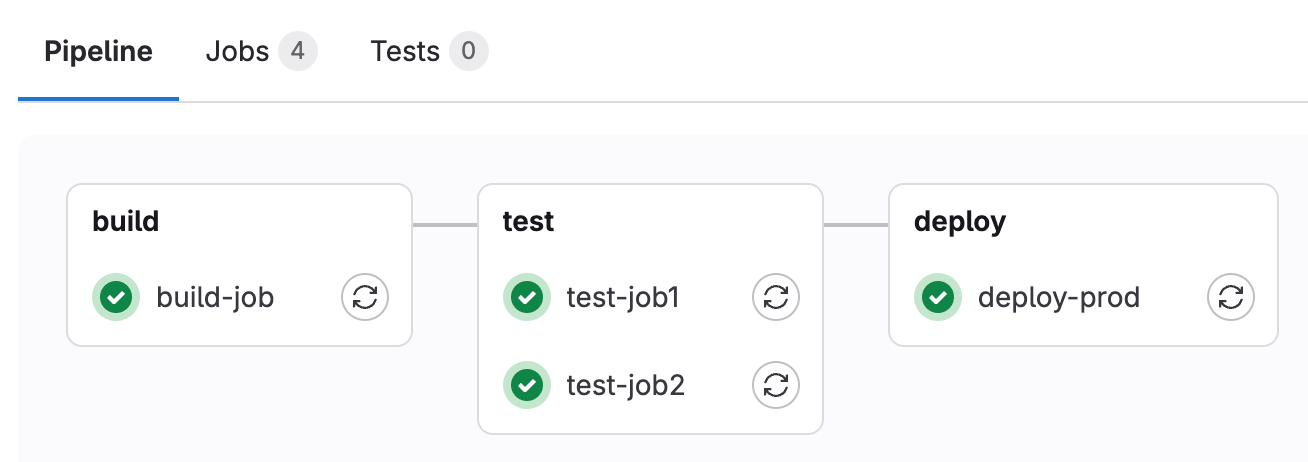How to Structure Your Codebase Using GitLab
If you’re building modern software and want to keep everything from code to cloud under one roof, GitLab makes it possible. From managing your repositories and organizing your teams to automating testing, deployment, and infrastructure. GitLab provides an all-in-one platform that simplifies your workflow, boosts collaboration, and helps you ship high-quality software faster. In this post, I’ll break down how I use GitLab to stay organized, efficient, and production-ready across every stage of development.

Jordan Wu
6 min read·Posted

Table of Contents
GitLab
GitLab is my go-to DevOps platform when I want everything from version control to CI/CD in one seamless environment. As a developer, I appreciate how GitLab brings code collaboration, issue tracking, and pipeline automation under one roof. No more jumping between tools. Whether I’m spinning up a quick feature branch, reviewing a merge request, or deploying to production, GitLab keeps the workflow clean and efficient. If you're building modern software and want to keep your workflow clean and efficient, GitLab is an excellent choice.
Team Organization
GitLab is a powerful tool for organizing your team structure and managing your company’s development workflows all in one place. By using top-level groups and nested subgroups, you can mirror your organization's hierarchy, making it easy to assign roles, manage permissions, and keep projects logically separated. Imagine you are setting up your company on GitLab, you’d start by creating a top-level group named Your Company. This group represents your entire organization and serves as the parent container for all your projects and subgroups.
Within this main group, you can create nested subgroups that mirror your company’s internal structure. For example:
-
Engineering
- Frontend Team
- Backend Team
- DevOps Team
Each subgroup can have its own projects, which makes it clear which team is responsible for which part of your product. GitLab allows you to assign roles and manage permissions at the subgroup level. This means that the Frontend Team can work on their specific projects without interference.
The DevOps subgroup might include several projects for managing CI/CD pipelines, infrastructure-as-code repositories, and monitoring tools. By keeping these projects within a dedicated subgroup, it becomes easy to oversee development workflows, enforce permissions, and maintain consistent workflow across all the related projects.
Check out the tutorial on How to Set Up Your Organization
Project Organization
GitLab Projects provide a structured environment where you can centralize your repositories, issues, merge requests, and documentation. Making it easier to maintain clean, scalable, and well-documented code. With built-in features like group hierarchies, labels, milestones, and permissions, GitLab helps teams stay aligned and productive, whether you're managing a monorepo or multiple microservices. Overall, GitLab's structured approach with top-level groups and nested subgroups helps you replicate your company hierarchy, streamline workflows, and establish clear boundaries and responsibilities. Making it a powerful tool for organizing your team and projects.
Check out the tutorial on Get Started Organizing Work With Projects
Code Organization
GitLab is a powerful platform for managing your code because it brings your entire development workflow into one place. From writing and reviewing code to testing, deploying, and monitoring it. With features like built-in version control, merge requests, code reviews, and integrated CI/CD pipelines. GitLab makes it easy to collaborate, track changes, and ship high-quality software faster. Whether you're working solo or as part of a growing team. GitLab helps streamline your process and ensures your code is always secure, organized, and ready for production.
Check out the tutorial on Get Started Managing Code
Continuous Integration and Continuous Deployment
CI/CD stands for Continuous Integration and Continuous Deployment/Delivery. A modern development practice that helps teams automatically build, test, and deploy code with every change. It reduces manual work, catches bugs earlier, and ensures faster, more reliable software delivery. GitLab makes CI/CD seamless by providing a fully integrated pipeline system right out of the box. With just a .gitlab-ci.yml file in your repo. You can define custom workflows for testing, staging, and deploying your applications. Since it's tightly integrated with your codebase. GitLab CI/CD gives you end-to-end visibility, streamlined automation, and complete control over your development lifecycle—all in one platform.
GitLab CI/CD Components Explained
- GitLab Runner
- This is the agent that actually executes your CI/CD jobs.
- It listens to GitLab, picks up jobs defined in your .gitlab-ci.yml, and runs them on a machine (could be Docker, a VM, or even your own server).
- Think of it as the worker that takes your instructions and does the building, testing, or deploying.
- Pipelines
- A pipeline is the full process triggered when you push code or create a merge request.
- It consists of stages (like build, test, deploy) and runs your jobs in the order you define.
- You can visualize a pipeline as a flow of work that automates everything from code to production.
- Jobs
- A job is a single task within a pipeline.
- Examples: run tests, lint code, build Docker images, or deploy to production.
- Jobs run inside a defined stage, and you can set dependencies, conditions, and parallelization.
- Stages
- These group related jobs together control the order they run in.
- Common stages are: prepare, build, test, deploy.
- Stages run sequentially, but jobs within the same stage can run in parallel.
How It All Connects
You push code → Pipeline is triggered → It runs through Stages → Each stage contains Jobs → Those jobs are executed by the GitLab Runner.
build-job:
stage: build
script:
- echo "Hello, $GITLAB_USER_LOGIN!"
test-job1:
stage: test
script:
- echo "This job tests something"
test-job2:
stage: test
script:
- echo "This job tests something, but takes more time than test-job1."
- echo "After the echo commands complete, it runs the sleep command for 20 seconds"
- echo "which simulates a test that runs 20 seconds longer than test-job1"
- sleep 20
deploy-prod:
stage: deploy
script:
- echo "This job deploys something from the $CI_COMMIT_BRANCH branch."
environment: production

Check out the tutorial on Get Started With GitLab CI/CD
GitLab CI/CD Variables
GitLab CI/CD variables are key-value pairs that allow you to store and reuse values across your CI/CD pipelines. It helps to keep your configurations flexible, secure, and clean. They can be defined at different levels: project, group, or globally. You can store anything from sensitive information like API keys and tokens to reusable configuration settings like environment variables or build versions. By using these variables, you avoid hardcoding sensitive data like secrets in your pipeline files, making it easier to maintain and secure your workflows while enabling dynamic and scalable deployments.
Check out GitLab CI/CD variables for more information.
Summary
I'm using GitLab to streamline collaboration, security, and automation in my development workflows. With CODEOWNERS file, I can assign specific team members as "owners" of particular files or directories, ensuring that the right people review and approve changes, which reduces errors and increases accountability. For deployment, GitLab’s integrated CI/CD pipelines automate the build, test, and deployment process, allowing for rapid, reliable releases to AWS. Additionally, GitLab’s infrastructure management tools, like Auto DevOps and Kubernetes integration, make it easier to manage environments, scale applications, and handle rollbacks—all within a single platform. This unified approach saves time, ensures consistency, and reduces complexity, ultimately increasing the reliability of deployments.
